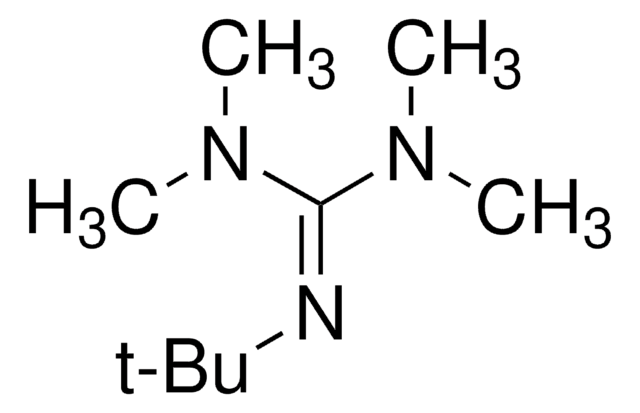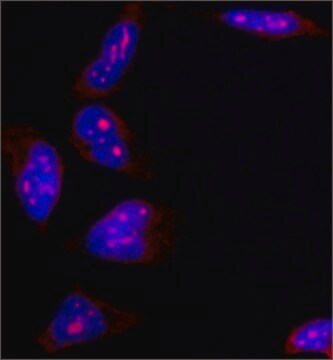05-1339
Anti-Trimethyl Histone H3 (Lys4) Antibody, clone CMA304
clone CMA304, from mouse
Sinónimos:
H3K4me3, Histone H3 (tri methyl K4), H3 histone family, member T, histone 3, H3, histone cluster 3, H3
About This Item
Productos recomendados
biological source
mouse
Quality Level
antibody form
purified antibody
antibody product type
primary antibodies
clone
CMA304, monoclonal
species reactivity
human, vertebrates
technique(s)
ELISA: suitable
dot blot: suitable
immunocytochemistry: suitable
immunoprecipitation (IP): suitable
multiplexing: suitable
western blot: suitable
isotype
IgG1κ
NCBI accession no.
UniProt accession no.
shipped in
wet ice
target post-translational modification
trimethylation (Lys4)
Gene Information
human ... H3C1(8350)
General description
Specificity
Immunogen
Application
This antibody has been shown by an outside laboratory to be suitable for ELISA.1
Immunocytochemistry:
This antibody has been shown by an outside laboratory to be suitable for immunocytochemistry.1
Immunoprecipitation:
This antibody has been shown by an outside laboratory to be suitable for immunoprecipitation.1
Multiplexing:
This antibody specifically recognizes histone H3 trimethylated on Lys4 by Luminex® assay.
Epigenetics & Nuclear Function
Histones
Quality
0.5 - 2 μg/mL (1:500-2000) dilution of this antibody detected trimethyl Histone H3 (Lys4) on 10 μg of HeLa acid extract.
Target description
Linkage
Physical form
Storage and Stability
Analysis Note
HeLa Acid extract lysate
Other Notes
Legal Information
Disclaimer
¿No encuentra el producto adecuado?
Pruebe nuestro Herramienta de selección de productos.
Optional
Storage Class
10 - Combustible liquids
wgk_germany
WGK 2
flash_point_f
Not applicable
flash_point_c
Not applicable
Certificados de análisis (COA)
Busque Certificados de análisis (COA) introduciendo el número de lote del producto. Los números de lote se encuentran en la etiqueta del producto después de las palabras «Lot» o «Batch»
¿Ya tiene este producto?
Encuentre la documentación para los productos que ha comprado recientemente en la Biblioteca de documentos.
Nuestro equipo de científicos tiene experiencia en todas las áreas de investigación: Ciencias de la vida, Ciencia de los materiales, Síntesis química, Cromatografía, Analítica y muchas otras.
Póngase en contacto con el Servicio técnico







